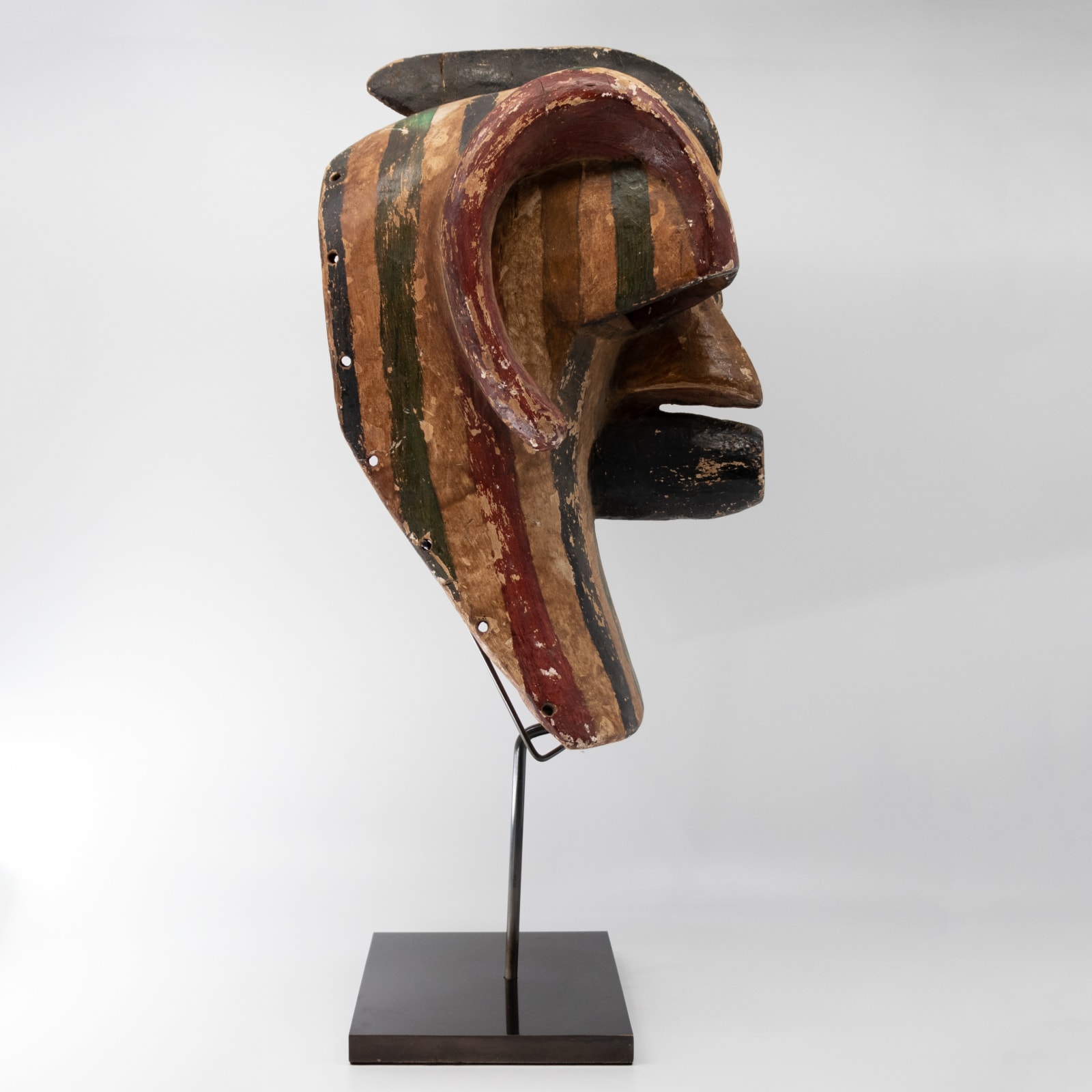Songye Mask, 20th Century CE
Wood
50.8 x 38.1 cm
20 x 15 in
20 x 15 in
ES.9597
Further images
This dynamic mask was made by the Songye group of what was once Zaire. While possessing elements of traditional Songye design, it is somewhat atypical. It is based around a...
This dynamic mask was made by the Songye group of what was once Zaire. While possessing elements of traditional Songye design, it is somewhat atypical. It is based around a tall, domed head. The eyes are plain squares with narrow slits. The face is dominated by a long, thick crest that arcs over the forehead and becomes a beaky nose from which is suspended a small bunch of dark hair. The background of the face is decorated with coloured designs, which contrast with the crest, the eyes, the strip down the face from the crest and the narrow strips from each eye to ear. The circumference of the piece is perforated with small holes, implying that it was worn with a textile or raffia costume.
The Songye people are based in the Democratic Republic of Congo (formerly Zaire). They were founded in the 16th century following an exodus from the neighbouring Shaba area, settling near to the Lualuba River. There are around 150,000 Songye divided into subgroupings that are under the governorship of a central chief known as the Yakitenge. More local governance is in the hands of chiefs known as Sultani Ya Muti. Their economy is based upon agriculture and pastoralism.
The Songye are perhaps best known for their artworks, which are both institutional and domestic/personal in nature. These include wooden figures that are usually decorated with feathers and other organic materials, and which are known as Bishimba. Large-scale and important pieces are created for use by members of the Bwadi Bwa Kifwebe, particularly including masks. The word kifwebe means “mask” in Songye, and describes long-faced creations decorated with curvilinear designs. Crested examples are male (like the current example), plain-topped ones are female. These are brought into “conflict” during the masquerade, the male acting aggressively, the female more demurely; the significance of this seems to be that the male scares people into social conformity, while the female instills familial values. The faces of these two characters find their way onto other, secular items pertaining to the Bwadi Bwa, including staffs, shields and stools.
The format of the forehead crest is unusual and the mask is thus a rarity – this is an impressive and powerful piece of African art.
The Songye people are based in the Democratic Republic of Congo (formerly Zaire). They were founded in the 16th century following an exodus from the neighbouring Shaba area, settling near to the Lualuba River. There are around 150,000 Songye divided into subgroupings that are under the governorship of a central chief known as the Yakitenge. More local governance is in the hands of chiefs known as Sultani Ya Muti. Their economy is based upon agriculture and pastoralism.
The Songye are perhaps best known for their artworks, which are both institutional and domestic/personal in nature. These include wooden figures that are usually decorated with feathers and other organic materials, and which are known as Bishimba. Large-scale and important pieces are created for use by members of the Bwadi Bwa Kifwebe, particularly including masks. The word kifwebe means “mask” in Songye, and describes long-faced creations decorated with curvilinear designs. Crested examples are male (like the current example), plain-topped ones are female. These are brought into “conflict” during the masquerade, the male acting aggressively, the female more demurely; the significance of this seems to be that the male scares people into social conformity, while the female instills familial values. The faces of these two characters find their way onto other, secular items pertaining to the Bwadi Bwa, including staffs, shields and stools.
The format of the forehead crest is unusual and the mask is thus a rarity – this is an impressive and powerful piece of African art.









